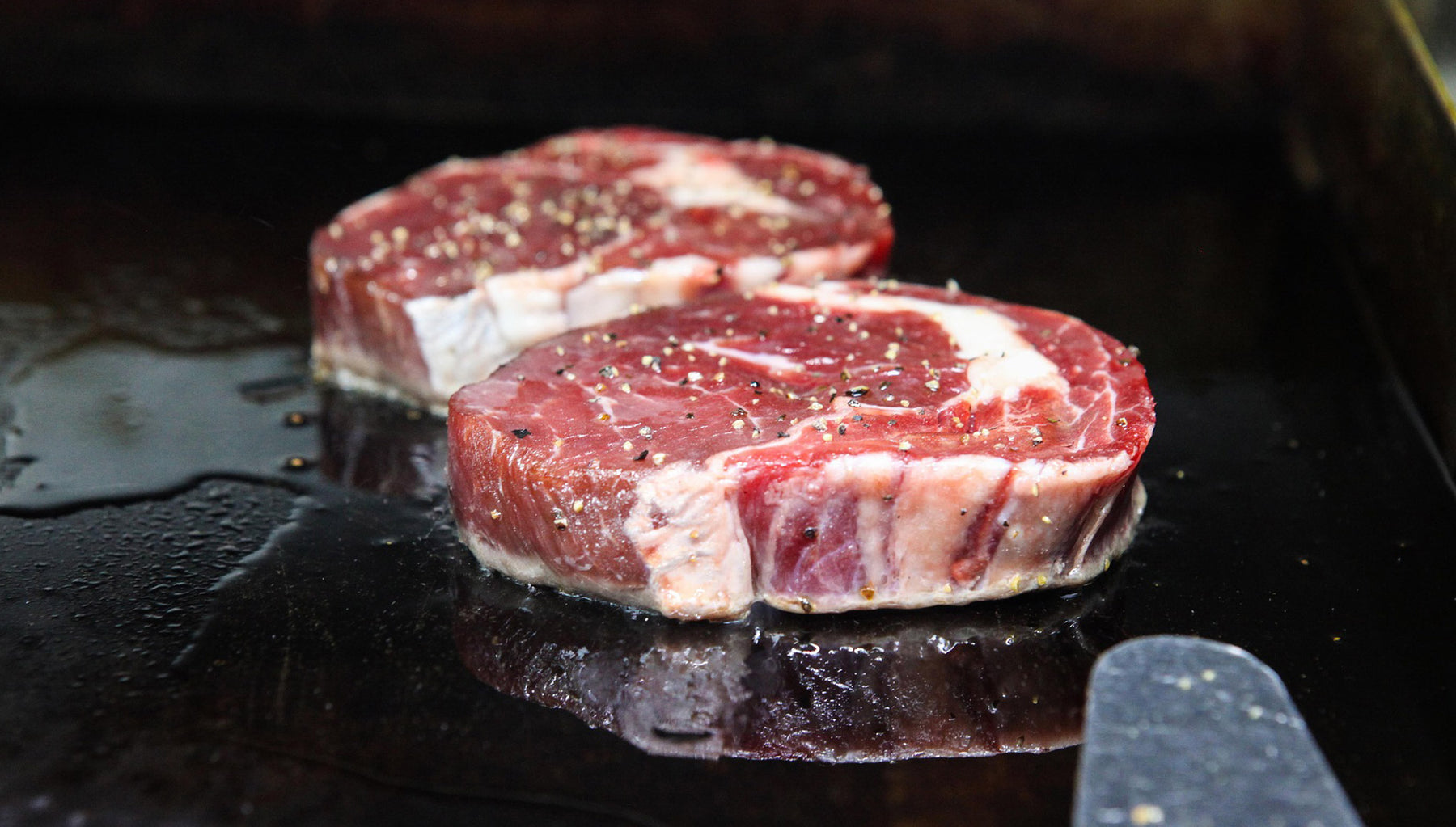
Beef Meat Grades: A Practical Guide to Know it All
Who wants a good steak? How do you want it to be cooked? What meat quality do you want? If the first two questions are easy to answer, the third one could leave you puzzled, right?
What exactly does ‘’meat quality’’ mean? Of course, you would be tempted to answer "I want a good quality". But the question here is slightly different than what you think.
When you hear or read ‘’beef quality’’, you should now automatically think about beef grades. In Canada, there are mainly four grades; Prime, AAA, AA and A, which are differentiated according to the animal’s age and the meat’s marbling. What follows is a short, practical guide to help you understand these grades, and what gives each of them a better quality for your meals.
What is meat marbling?
First, it’s important to understand what marbling is, to understand the differentiating elements of beef grades that will follow.
On a meat, marbling is a pattern made by flecks and streaks of white fat on beef muscle. This intramuscular fat is not the same as the fat that surrounds the meat. As it melts during grilling, it enhances the meat's flavour and tenderness. More marbling means higher quality. It is this all-important factor that decides the grading of beef meat into categories A, AA, AAA and Prime.
What is a grade of beef meat?
As mentioned above, in Canada, beef is classified into four categories, or grades, that are differentiated by the animal’s age and the meat’s marbling.
The 4 main grades are Prime, AAA, AA and A. Let's take a look at what distinguishes them.
‘’PRIME’’ beef meat

The PRIME grade comes from a youthful beef that is less than 30 months old with a meat that has very abundant marbling, so you'll usually find more flavours in a Prime beef steak. The Prime grade is the highest and only about 2% of all cattle can be assigned this grade.
‘’AAA’’ beef meat

In the United States, according to the USDA (US Department of Agriculture), it is also called Choice Rating. In Canada, it's AAA. This grade comes from a youthful beef less than 30 months old with a meat marbling that is abundant to moderate, a little less than Prime beef meat. This meat will still contain a lot of flavours. About 50% of the cattle can reach this classification.
‘’AA’’ beef meat

This grade also comes from a youthful beef of less than 30 months of age and has moderate to light marbling. Though, its lower amount of it doesn’t mean you won’t have your favorite beef taste. About 45% of the cattle are in this category.
‘’A’’ beef meat

The last grade of beef is A. It comes, once again, from a youthful beef of less than 30 months old, but it is dotted with a very few marbling streaks. Only 3% of the cattle fall into this classification. It is still considered a high-quality meat, but its lower percentage of marbling may give it a little less flavour. You can however use it in sauces or ground beef recipes.
What about Angus beef?
You may have seen those on burger restaurants menus; Angus beef. But is Angus a beef grade? Many have asked us the question, so here’s the answer.
In fact, Angus is actually not a beef grade, but rather a breed, among others like Hereford, Simmental or Holstein. By the way, Holstein cows are the black and white ones that we see most often in representations as icons or logos of dairy companies, for example.
What makes Angus beef so popular is its large amount of meat and high marbling.
Maillard, online butcher
To ensure flawless excellence in taste and superior beef grades, opt for Maillard.
Maillard is an online butcher that offers a wide range of exceptional quality meats, delivered right to your doorstep the very next day. You will find all the meat products you love: local and exotic meats, seasoned or regular, ordered by the box or just a single piece, but always with our guarantee of great taste!
Order now: www.maillard.co


